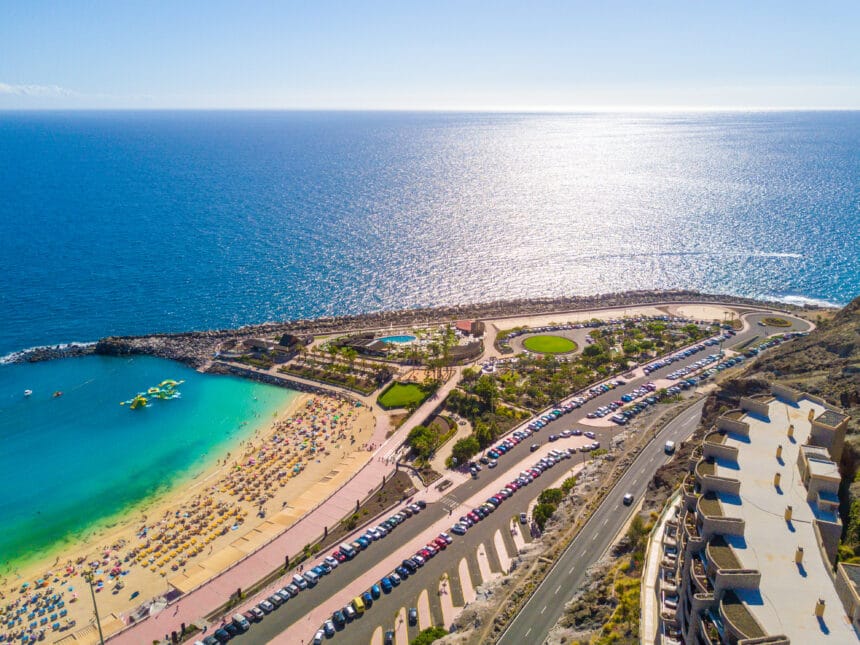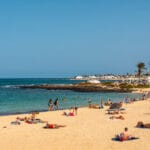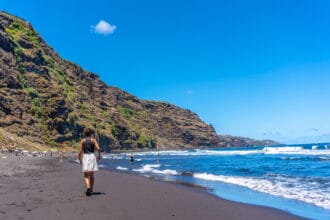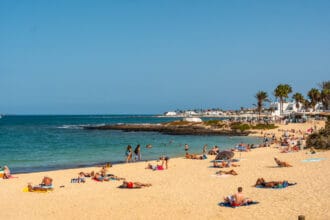I’ll be honest, I used to think the Canary Islands were just another package holiday destination. You know the type; crowded resorts, chips with everything, and sunburnt tourists in football shirts. How wrong I was.
These Spanish islands, scattered off the coast of Morocco, are perhaps one of Europe’s most underrated destinations. And I say perhaps because, well, maybe I’m just late to the party. But after spending time exploring them, I can’t understand why more people aren’t raving about this place.
Let’s start with something you probably haven’t seen before: black sand beaches. Tenerife’s Playa Jardín isn’t your typical postcard beach. The sand is dark, almost charcoal-coloured, created by centuries of volcanic activity. It sounds odd, I know, but there’s something quite striking about lounging on this dramatic coastline with the Atlantic stretching endlessly ahead of you.
The volcanic theme continues pretty much everywhere you look. Lanzarote feels like stepping onto another planet entirely. The Timanfaya National Park is all twisted lava fields and otherworldly landscapes. They actually cook food using geothermal heat from the ground, which is either brilliant marketing or genuinely fascinating geology. Probably both.
But here’s where it gets really interesting. Mount Teide on Tenerife is Spain’s highest peak, and the stargazing up there is supposedly world-class. I say supposedly because the clouds rolled in when I visited, which was typical really. But the cable car ride alone is worth it, even if you can’t see the stars. The views across the island are incredible, assuming the weather cooperates.
Gran Canaria surprised me the most, though. Everyone talks about the beaches and yes, they’re lovely, but the interior is completely different. Rolling hills, pine forests, dramatic ravines. It’s like someone took bits of different countries and stuck them together on one island. The diversity is quite remarkable, actually.
La Palma calls itself ‘La Isla Bonita’ and it’s not wrong. This one feels more authentic somehow, less touristy. The hiking is excellent if you’re into that sort of thing. The Caldera de Taburiente is this massive crater that you can walk into, though I’d recommend proper walking boots. I learned that the hard way.
What strikes me about the Canaries is how different each island feels. Fuerteventura is all about wind and waves – perfect for surfers and windsurfers. El Hierro is tiny and peaceful, almost forgotten. La Gomera has this ancient whistling language that locals still use to communicate across valleys, which sounds made up but apparently isn’t.
The weather is another selling point, though I suppose everyone knows that already. It’s warm year-round without being oppressively hot. Perfect beach weather in winter, which is quite nice when you’re escaping a dreary British February.
I think what I appreciate most is that you can have completely different holidays on these islands. Beach lounging, serious hiking, cultural exploration, or just eating your way through local restaurants. The food is better than I expected too – lots of fresh fish, interesting cheeses, and those wrinkly potatoes with green sauce that appear everywhere.
The only downside, if I’m being picky, is that some areas do feel quite developed. Parts of Tenerife and Gran Canaria can be a bit overwhelming if you’re looking for peace and quiet. But then again, that infrastructure means everything works smoothly, which has its advantages.
Perhaps I’m overselling them, but the Canary Islands genuinely surprised me. They’re accessible, diverse, and offer something different from the usual European beach destinations. Whether you’re after adventure or relaxation, there’s probably an island that fits. Just don’t expect them to stay under the radar much longer.













